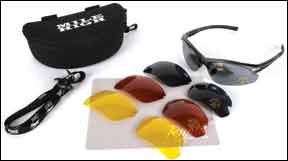In-the-Ear Headsets I was interested to read your article on in-the-ear headsets in the February 2011 issue as I converted to an ITE system 3 1/2 years ago. I fly a turbonormalized Cirrus SR22. At Sun-n-Fun 2007 I bought both the Quiet Tech Halo and the Clarity Aloft with the intention of testing them to evaluate them against my Bose headsets. Going into my test I felt the Bose would be superior and the Clarity Aloft would beat the Halo, based on appearances. I typically fly 200 to 275 hours a year and my flying consists of a mixture of short local flights and long cross country trips. On several occasions, I have flown long days back to back and I remember one trip when I flew out to Arizona to pick up my son and returned to my home base at Marthas Vineyard the next morning. That was four days of long legs and the Halo was as invisibly comfortable on the last leg as it was on the first. Comparing the Halo to the Clarity Aloft, the Clarity Aloft seems more robust at first glance, but in real life, the Halo has been a stellar performer. The Halo system seems to fit against my neck more comfortably and when turning my head, the Halo doesnt catch against my collar or rub against the seat back. The long tubes are there for the user who wants to keep the Halo on their shoulders. Trimming the tubes is easy and there is no mystery to their official length. The real test however is noise reduction and microphone performance. Here the Quiet Tech Halo was a standout. It offered noticeably better performance than the Clarity Aloft in both areas. I remember the early testing I did and I was shocked to find that the sound quality and noise reduction was superior to my Bose headsets. I kept switching back and forth from the Bose to the Halo to confirm what I was hearing. One time, I caught the cord under my seat track and nicked the cord. I had to return the Halo for service. Returning to my Bose was like torture. The Halo was returned as new and quickly. I now own four Halos and keep the Bose for those who want more traditional hearing protection. Even after the two-year warranty period has passed, Halo support has been perfect. Phil continues to stand behind the product fully, with customer satisfaction his primary concern. I wish other manufacturers would be half as keen to follow his example. As with other new things, the foam earpieces become second nature after a bit of use. Myron Garfinkle, More on Sunglasses For some time Ive felt that the advantages to wearing vision enhancing sunglasses make them an essential safety tool, so when I saw your sunglasses review, I thought I was in for an education. Unfortunately, I found your review disappointing when it failed to educate your readers in at least two important topics. Your review didnt separate sunglasses that filter all parts of the visual spectrum equally (known as neutral-density filtration, which are always grey lenses) from those that claim to enhance visual perception. The latter is often referred to as Blue-Blocking and are generally rose or yellow tinted. While these claims of visual enhancement may seem like marketing hype, skiers and professional drivers wouldnt be caught without them. In daylight fog, snow, haze or other adverse conditions, the advantages are dramatic and easily measured. Road signs that are featureless shapes become readable at far greater distances; cars that are invisible become distinct; terrain features are much easier to make out. In aviation, discerning light-colored aircraft from light-colored clouds and snow- covered terrain is at least as important. Please, at least test this out and report back to your readers. Ill be amazed if you find grey sunglasses and Blue-Blocking sunglasses to be equal. The other topic of interest is segment height in progressive ground glasses. I suspect many of your readers, like myself, have decided to wear progressive eyewear. These are ground to allow reading through the lower section and distant vision through the upper portion. The location of the transition from reading to far vision is known as segment height. Most sunglasses will be ground to about a 50/50 ratio, which means you can read by the pool and drive with about equal ability. This works we’ll for most people. But for some pilots, it will cause difficulty. Pilots who spend a lot of time looking at the ground, such as helicopter, glider, search and rescue and other pilots with canopies or windows that are low in the cockpit, will find themselves looking through the reading portion of the sunglasses at far objects. This means more fatigue, less visual perception and a greater likelihood of air sickness. The solution is to request as low a segment height as possible. The resulting glasses, for me at least, will allow you to easily read the details of charts and detailed text information from flight computers without interfering with distant vision. Ive only been able to compare neutral density (grey), Serengeti and Eagle Eye Sun Tiger glasses. So far, the Serengeti glasses have been the clear winner. You criticized the Serengeti glasses for being heavy. I agree. My original (ground from glass) Serengetis were far too heavy to be comfortable in the long run. My new Serengetis, progressive ground with a minimum segment height out of some kind of plastic, are absolutely fantastic and I hope I never have to fly without them. Im sure others are equally as good and I hope to see you compare them. Brian Hood, Long-Term Support As an aircraft owner and one who has an Aspen installed, what is going to happen 10 to 20 years from now when the electronic processors fail? Will manufacturers such as Garmin and Aspen be able to service these units? We know computers become obsolete in about two to four years, buy what about aviation products? I think this is a good subject to look into. The mechanical instruments can be repaired, but what about the electronic ones ? Jeff Aryan, Its a good question and one we have already answered. See the article in the March 2010 issue for the details. The short answer is support will be available for a long time, but not forever. Kitfox Correction In your review of the Kitfox in the December 2010 issue, there was one major error that I would like to clear up. The company did not go through a bankruptcy in 1999. It was an employee buy-out that took effect in January 2000 only. They did file for bankruptcy in 2005. So essentially, the Kitfox was not in production from October 2005 to April 2006; otherwise, it has been in continuous production since 1984. John McBean, iPAD Charger? I purchased an Apple iPad per your suggestion in the article in the December 2010 issue. My question is: Where can I purchase a 24-volt-to-USB power adapter for my iPad when I am in my airplane? Bob Rogers, A web search for “24v to USB cigarette” tuned up some options from BatteryBob.com and Amazon.com for $12 or less that should do exactly that. Some offer multiple plugs. We havent tried them, but there’s no reason they shouldnt work. Both Sportys and Aircraft Spruce sell 28-to-12 volt converters which would allow you to use a 12-volt automotive charger with the iPad. 
via e-mail
via e-mail
Corona, California
Kitfox Aircraft
Via e-mail





